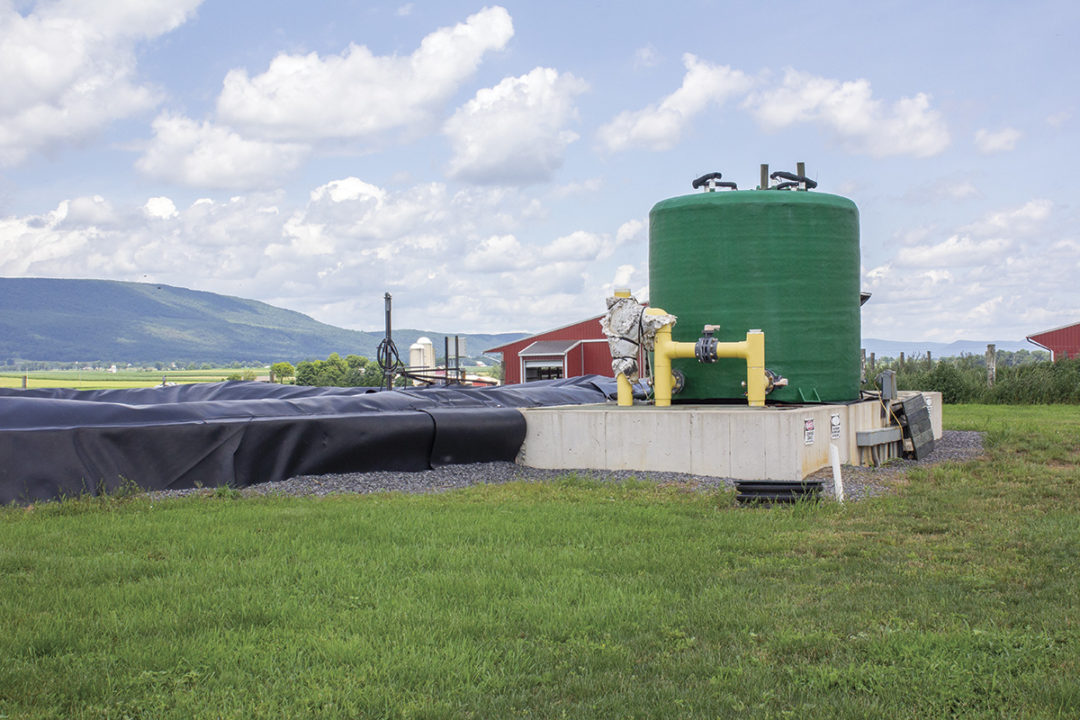Anaerobic digestion is seeing increased interest and implementation on many farms throughout the U.S. Current government policy, consumer demand and company pledges toward pursuing greenhouse gas (GHG) neutrality are helping drive this change. Two government programs, the EPA Renewable Fuel Standard (RFS) and state-driven Low Carbon Fuel Standards (LCFS), provide much of the financial incentive (80%-90% project income). But what is anaerobic digestion? What do the economic opportunities look like? And, how would it fit on your farm?
The RFS is a federal government program that requires specific volumes of renewable fuel to replace petroleum-based transportation fuel. It has historically helped support corn-based ethanol. However, producing other fuels, such as methane from anaerobic digestion, is also encouraged. Similarly, several states (California and Oregon, with more states considering) have implemented LCFS to help promote alternative fuels. These programs often require a carbon intensity score – a measure of the GHG emissions associated with producing, distributing and consuming power. Both programs reward fuels that are greener or do the most to lower GHG emissions. Methane generation from livestock manure has achieved some of the lowest carbon intensity scores of all pathways proposed, making it extremely valuable. Scoring achieved varies with systems implemented, and credit prices vary with market conditions, but historical average prices have resulted in potential credit values of around $1,000 per dairy cow per year.
While this credit value is highly lucrative, anaerobic digestion systems can be substantial investments. Anaerobic digestion is a process by which microbes break down organic materials in an oxygen-free environment, resulting in two output streams – a stabilized digestate suitable for land application and an energy-rich gas called biogas. While anaerobic digestion occurs in all liquid manure management systems, we typically suggest that the resulting biogas is captured and used when we refer to anaerobic digestion on a farm. Anaerobic digesters on livestock farms generally take two forms: an impervious cover over the surface of the liquid manure storage or a heated tank that holds the manure for a short period. As microbial activity is strongly related to temperature, heated tanks offer shorter retention times and higher gas production, especially in northern climates. However, they are typically more expensive to build and run.
A farm's management practices and location often dictate the choice between covering an existing manure storage or constructing an anaerobic digester. Farms in warmer areas of the country, southern states and California are often more able to use covered lagoons successfully. Farms in northern climates often choose heated digesters to increase methane production.
The last part of the biogas system is related to biogas utilization. Biogas is primarily methane and carbon dioxide with small amounts of other compounds, most notably hydrogen sulfide. In the early 2000s, biogas was typically combusted on a farm for heat or, in some cases, electricity generation. These systems often only needed minimal biogas cleaning to be successful. More recently, much focus has been on producing a clean methane product injected into natural gas pipelines around the county. Achieving pipeline-quality gas from a digest project requires a gas cleaning system to remove hydrogen sulfide and most carbon dioxide. This choice results from the RFS and the LCFS, which require transportation fuel production. While electricity production will eventually be allowed to qualify for the RFS, rules are still changing.
While generalizing the economics of these projects is difficult due to economies of scale impacts, a typical project at a 500-cow dairy might take between $100,000 to cover manure storage and $500,000 for a heated digester, a gas cleaning system of around $500,000, and a pipeline hookup costs $100,000 to $1 million (or more, depending on the pipeline location). The digester cost and gas cleaning system will increase substantially for larger dairies. All told, a digestion system is a multi-million-dollar investment, yet with potential payback credits of $1,000 per cow, there are opportunities for payback.
Currently, gas and energy companies are financing many digester systems in collaboration with farms. Some of these systems use a profit-sharing model to determine what to pay the farm. In others, a fee is paid for use of the manure. What works right for you and your operation will be specific to your farm, goals and risk profile. While anaerobic digesters require high capital investment, current market incentives mean potential for high rewards. Having a digester installed on your farm reduces the carbon footprint of your production system, reduces odors, potentially retains more manure fertilizer value and, if things work well, results in renewable fuel. Now is a great time to evaluate how a digester could fit on your farm.







